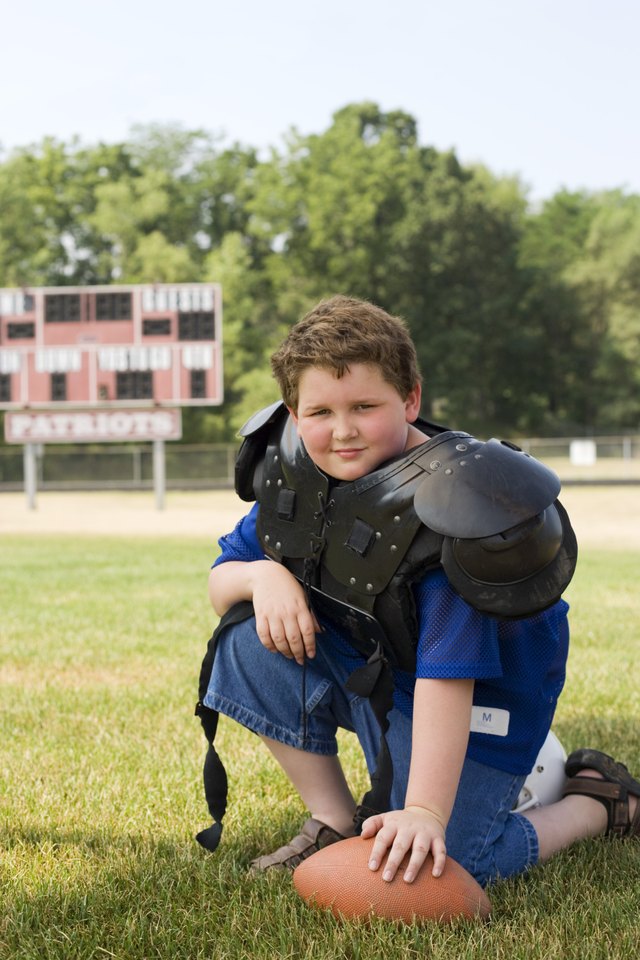Proper Way to Install Football Pads

Unless you’re a kicker, don’t expect to play football and escape completely unscathed. No matter how many safety precautions are taken, some football players will sustain serious injuries. And for every serious injury there are dozens of bruises, scrapes and strains. A good set of pads, however, can help prevent many injuries, provided you wear them properly. Indeed, the first lesson a young football player should learn is how to install his pads correctly.
Leg Pads
Leg pads are fairly easy to install because they typically fit into slots in your pants or girdle. Indeed, some girdles -- which resemble a tight pair of shorts -- have hip and tailbone pads preinstalled. You’ll have to install pads into other girdles, while some uniforms might require you to place all seven leg pads into the outer pants. No matter which garment you’re using, always turn it inside-out before installing your pads. Knee pads always go in your outer pants. Place them in the lowest slots so the rounded end points down and the flatter side is on top. As with all your pads, make sure the curvature matches your leg when you pull your pants on. Slip your thigh pads into the large slots that match up with your thighs, with the flatter side pointing up. Hip and tailbone pads typically slide in the appropriate pockets as well, with the thinner sides facing down in both cases, although they may snap into some girdles or pants.
Shoulder Pads
Pull your shoulder pads over your head. The longer side, on which the straps are attached, should be in back. Pull the two straps through the loops located toward the lower front of your pads. Pull the straps through as tightly as possible, while still retaining good freedom of movement. Your shoulder pads may not protect you properly if they’re too loose. Pull your jersey on after you’ve adjusted your shoulder pads.
Other Padding
The cup may not be considered a pad, but it’s an important protective device. Just slide the plastic cup into your jock strap before putting on your pants. Most other protective gear is optional. Many linemen, for example, wear arm pads, which typically slide onto your arms. Make sure the padded side faces away from your body. Collar pads or neck rolls typically snap onto the back of your shoulder pads. If you wear some type of rib vest, pull it over your head before you put on your shoulder pads.
Helmet
The helmet is your most important protective device. It’s not technically a pad, but it contains padding that must fit properly. The pads within your helmet should fit tightly against your head. The helmet shouldn’t be tight enough to be uncomfortable, but it’s important that the helmet isn’t loose, otherwise it may do more harm than good if you’re hit in the head. The other pad that comes with your helmet is the chin pad. Like the rest of the helmet, the pad shouldn’t be uncomfortable, but it should fit snugly under your chin.
References
Resources
Writer Bio
M.L. Rose has worked as a print and online journalist for more than 20 years. He has contributed to a variety of national and local publications, specializing in sports writing. Rose holds a B.A. in communications.
